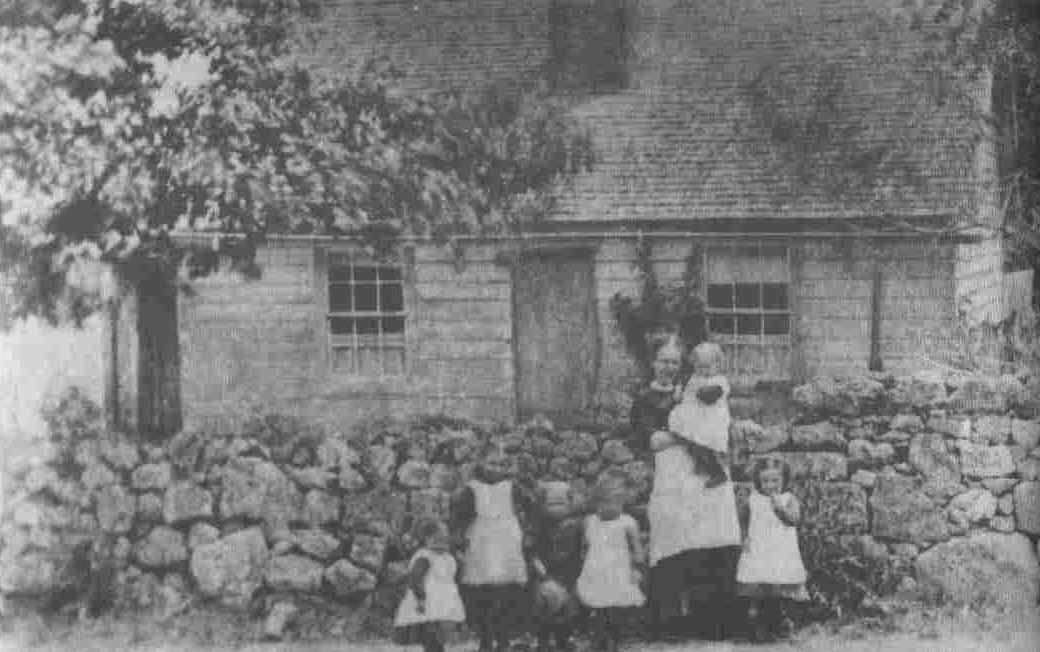|
The Pritchard Family |
||
|
The New Zealand Connection |
| JOHN JAMES PRITCHARD | The Fencible |
The Royal New Zealand Fencibles consisted of discharged British Soldiers and Sailors who arrived in New Zealand between 18½7 and 1849, to man military outposts against Maori attacks on the infant city of Auckland.
|
|
The three ships bringing Fencibles for Howick in 1847 were the "Minerva", "Sir Robert Sale", and "Sir George Seymour". The Minerva, a Barque of 691 tons, reached Auckland from London on October 8, 1847 with 80 rank and file Royal New Zealand Fencibles, 69 women and 147 children. During the voyage one woman and six children died, and six children were born. Many adults were plagued with scurvy and dysentery. On November 15th the Fencibles from the Minerva and their families, were taken from Auckland to Howick in the Government brig "Victoria".
|
When the Fencibles enrolled in England, they were offered free passages for themselves and their families pay ranging from 6d. to ls.3d. a day, in addition to their pensions, an acre of ground and a cottage but when they landed they found that the promised cottages had not been built.
| Leaky and badly ventilated weatherboard sheds with dubious privacy gained by makeshift curtains were rapidly constructed to house families, although some preferred rough shelters of ti-tree and raupo. In due course, the cottages were built, mainly double units with a separate entrance door, two small rooms and a tiny attic for each family, and a common middle brick wall and chimney. |  |
|
Auckland
Public Library Photograph Collection |
The need of timber for the cottages created a temporary scarcity hut by 1848 there were 50 wooden dwel1ings and 180 raupo huts and a year later the number of wooden dwellings had grown to 162, and only 32 raupo huts.
The Fencibles agreed to serve for 7-years and were expected to engage the Maoris should the need arise. Apart from this, their military duties consisted of six days drill in spring and six in the autumn and attendance at Church Parade every Sunday in full Military Kit. They were armed with muzzle-loading "Brown Besses".
|
Many of the men found employment on public works, others found private employment. In the 1848 Auckland Directory, John J. Pritchard is listed as a Wagoner, and in 1855 as a Labourer. Everyone cultivated their own land, growing their own food and selling the surplus in Auckland. "Howick Butter", taken by the women by boat to Auckland in cabbage leaves, was a prized delicacy. Fare was spartan, as a 200-lb bag of flour cost £5, and farm wages were 2s. to 3s. a day. Only once, in 1851, before the outbreak of the Maori war, was it necessary to stand to arms in readiness for an emergency. On this occasion the force was assembled by Captain MacDonald on the hill overlooking the village, where later, in 1863, the stockade was built. The cause of the alarm was a native war party that had landed at Mechanics Bay, Auckland, to avenge an insult rendered to a chief whose slave had been imprisoned for stealing. Owing to the firm action of Sir George Grey, bloodshed was averted, and after receiving presents, the party returned to Thames. |
|
During this time, until 1861, when the family moved to Napier, John and Mary Pritchard had five more children:
| Albert Pritchard | born | 9 April 1849 |
| James Pritchard | born | 18 August 1851 |
| William Henry Pritchard | born | 26 November 1853 |
| Elizabeth Ann Pritchard | born | 7 February 1856 |
| John Pritchard | born | 31 October 1860 |
Napier
There is the possibility that John J. Pritchard was involved in voluntary military duties after moving to Napier.
He resided in Shakespeare Road and in the Hawkes Bay Post Office Savings Bank Index
1873-1878 his occupation is given as Bellringer, while in the Hawkes Bay Almanac - 1874, his occupation is given as Chimney-sweep.
John James Pritchard died at his home in Shakespeare Road, Napier on 14 June
1876. He was aged 69.
Mary Pritchard died on 5 April 1902 at Napier and is buried with her
husband in the Bluff Hill Cemetery, Napier.
The following obituary was taken from the New Zealand Herald, April 25, 1902.
"The late Mrs Pritchard who died at Napier on April 3rd at the advanced age of 87 years was a very old colonist. She arrived at Auckland with her husband and three children in the ship Minerva in 1847. And they were in the northern capital during the greater part of the Maori War. In 1861 Mr and Mrs Pritchard, with their family, went to Napier and there the deceased lady remained up to the time of her death. She leaves a large family of children, grandchildren and great-grandchildren, the members of the two youngest generations being nearly 120. The deceased was widely known and esteemed."
From the "Story of Napier 1874—1974" by Dr. H.D.N. Campbell. The name of J.J. Pritchard, settler, was added to the Napier Municipal Petition 1874. This petition was requesting that the Governor of N. Z. "constitute the Town of Napier, in the Province of Hawkes Bay, a Borough under The Municipal Corporations Act 1867".